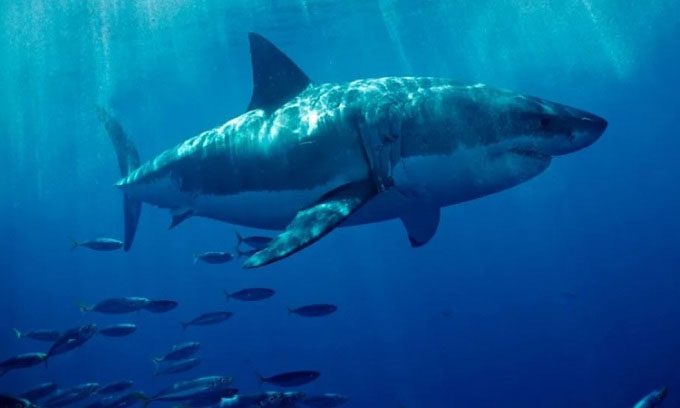Various Shark Species in Florida’s Waters May Encounter and Consume Cocaine Discarded by Smuggling Gangs.
For decades, large bundles of cocaine have washed up on Florida’s beaches, smuggled goods from South and Central America. These bundles are often thrown into the sea to evade law enforcement, with ocean currents and tides pushing them ashore. In June, the U.S. Coast Guard seized 6,400 kg of cocaine in the Caribbean and Atlantic Ocean, with an estimated value of $186 million.

Florida’s waters are home to many shark species. (Photo: Fox News).
With such a significant amount of floating cocaine, marine biologist Tom “The Blowfish” Hird wanted to investigate whether thousands of sharks off the coast of Florida are consuming drugs thrown into the sea and, if so, whether these drugs have any effects on them. In the Shark Week program on the Discovery Channel, Hird and environmental scientist Tracy Fanara from the University of Florida conducted a series of experiments to explore this issue.
Hird and Fanara focused on the Florida Keys, where fishermen often share stories of sharks consuming drugs drifting into the area due to ocean currents. During the program, they dove with sharks to observe any unusual behaviors and to monitor whether the sharks exhibited unexpected actions. A great hammerhead shark (Sphyrna mokarran), a species known for being cautious of humans, charged straight at the diving team and seemed to tremble while swimming. At a shipwreck located 18 meters below the surface, Hird encountered a sandbar shark (Carcharhinus plumbeus) that appeared fixated on something and swam in tight circles.
To investigate further, Hird and Fanara designed three experiments to see how sharks reacted to packages of cocaine discarded into the water. They created several bundles of similar size and shape to resemble real cocaine packages. Surprisingly, the sharks swam straight toward the bundles and competed to bite them. One shark even grabbed a bundle and swam away. Next, the research team created a bait block from fish powder, which could trigger a sensation similar to the high from cocaine. The sharks became frantic.
Finally, the researchers dropped fake cocaine bundles from an airplane to simulate the real-world drug drop activity. Various shark species, including the tiger shark (Galeocerdo cuvier), swam toward the packages. According to Hird, what they discovered does not necessarily mean that sharks in Florida consume cocaine. Many factors could explain the observed behavior during filming, and the experiments need to be repeated multiple times to draw any conclusions.
The biologist hopes the program will lead to more research in the area. Hird plans to conduct further tests with tissue and blood samples to determine if there is evidence of cocaine in the sharks’ bodies.



















































